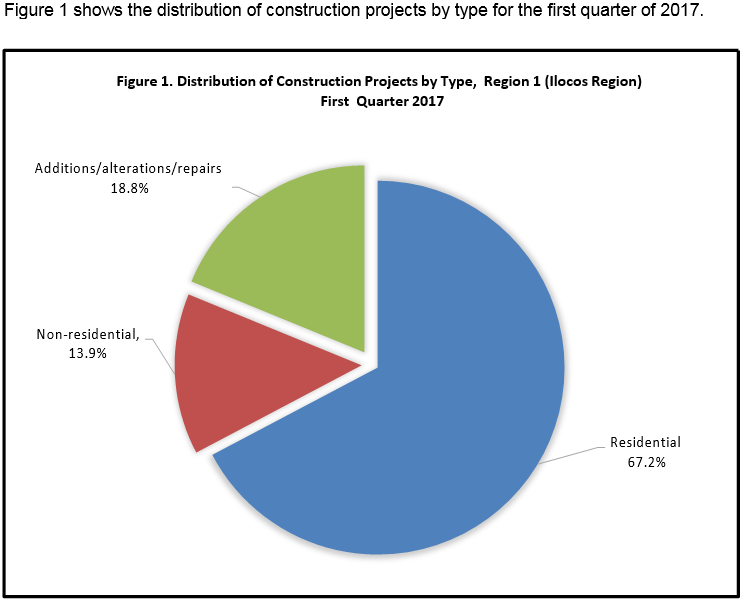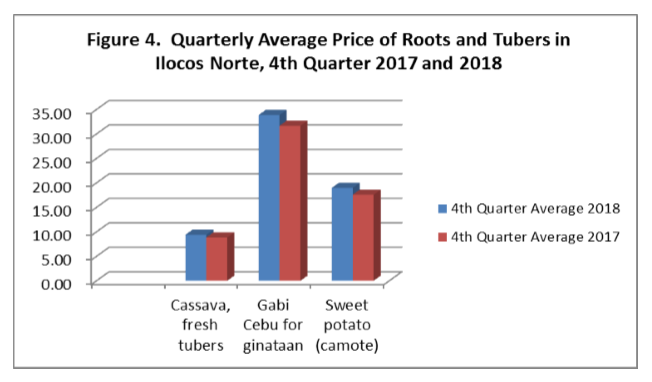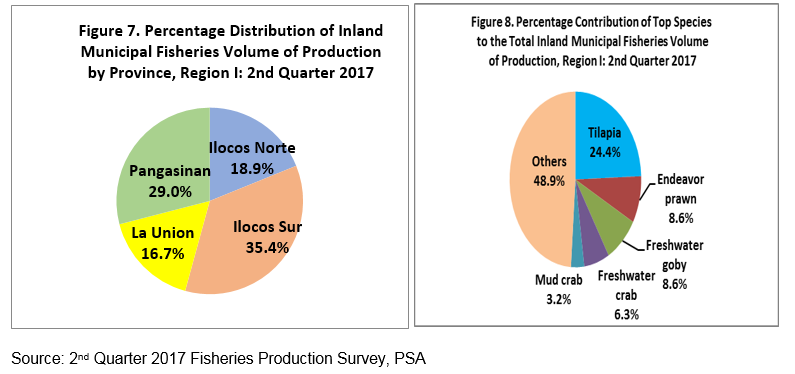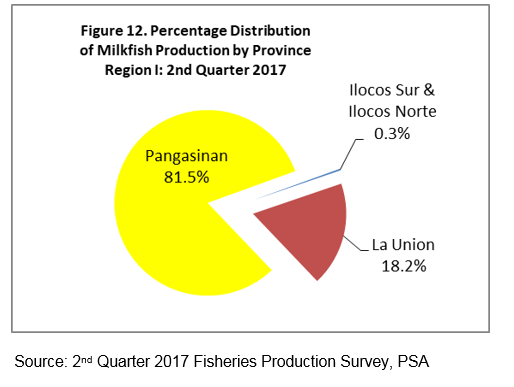The overall fisheries production in Region I registered positive growth in 2nd quarter 2017 after some periods of slump. From the total output of 39,735 metric tons in 2nd quarter 2016, it grew to 44,479 metric tons this 2nd quarter 2017. All the provinces posted increases in output, except Ilocos Sur.
All three fisheries sub-sectors registered gains in output. The aquaculture sub-sector contributed 85.0 percent to the total fisheries production of Region I in 2nd quarter 2017. Meanwhile, the municipal and commercial sub-sectors accounted 12.6 percent and 2.4 percent, respectively.
In terms of provincial distribution, the province of Pangasinan shared the bulk of production of about 79.8 percent in 2nd quarter 2017. The three fisheries sub-sectors registered higher production as compared to its respective level in 2nd quarter 2016. The total fishery output of the province increased by 9.8 percent from 32,324 metric tons to 35,485 metric tons.
The province of La Union also registered higher overall fisheries production in 2nd quarter 2017 as compared in its 2nd quarter 2016 level. Its commercial and aquaculture sub-sectors recorded positive growth in output. Total fisheries production of the province was posted at 5,447 metric tons, higher than the 3,971 metric tons output in the same period of 2016. La Union accounted 12.2 percent to the overall fisheries production of Region I in 2nd quarter 2017.

The fisheries production of Ilocos Sur, which shared 4.0 percent to the total fisheries output of the region, registered decrement in 2nd quarter 2017. Its production during the period was 1,782 metric tons, lower than the output of 1,939 metric tons in 2nd quarter 2016. All the fisheries sub-sectors of the province posted decline in output.
The province of Ilocos Norte, which also shared 4.0 percent to the total fisheries production of Region I, went up by 17.6 percent in 2nd quarter 2017. Its output was pegged at 1,765 metric tons, higher than the output in the same period in 2016 of 1,501 metric tons. Both the municipal and aquaculture sub-sectors contributed to the overall positive growth in the fisheries output of the province.
Commercial Fisheries
The commercial fisheries volume of production in Region I posted positive growth of 16.1 percent in 2nd quarter 2017. Its output was registered at 1,073 metric tons, higher than the output in the same period of 2016 of 924 metric tons contributed by the provinces of Pangasinan and La Union. More frequent fishing operations were observed due to good weather condition. Also, increased number of boats in operation, bigger sizes of catch, presence of school of fish, and higher diversity due to the presence of more natural foods in artificial reefs were noted. Meanwhile, the province of llocos Sur posted lower production due to lesser fishing operations attributed to continuous rains and rough seas especially in the later part of May and early part of June.
In terms of provincial shares, Pangasinan accounted for 78.3 percent of the region’s commercial fisheries volume of production, followed by La Union with 15.6 percent share, and Ilocos Sur, 6.2 percent share.

The top five major catch in the commercial fishing of the region during the 2nd quarter 2017 were Roundscad, Skipjack, Yellowfin tuna, Frigate tuna, and Indian mackerel.
Municipal Fisheries
The overall municipal fisheries production of Region I in 2nd quarter of 2017 grew by 3.8 percent. The overall production was posted at 5,604 metric tons, higher than the output in 2nd quarter 2016 of 5,396 metric tons. Increased catch in the marine municipal contributed to the overall gains in output of the sub-sector.
Marine Municipal
The marine municipal fisheries in Region I posted increase in production in 2nd quarter 2017. From the 5,039 metric tons production in 2nd quarter 2016, it grew to 5,293 metric tons this year contributed by Ilocos Norte and Pangasinan. More fishing operations, use of additional fishing gears, more catch from payaos and artificial reefs, presence of school of fish, and bigger sizes of catch were the factors that may contributed to the overall growth of the sub-sector.

The province of Pangasinan contributed 45.7 percent to the region’s marine municipal fish catch for the 2nd quarter 2017, followed by Ilocos Norte with 28.5 percent share, Ilocos Sur with 20.8 percent share, and La Union with 5.1 percent. The dominant catch in marine municipal waters of Region I during the period were Squid, Roundscad, Flying fish, Yellowfin tuna, and Skipjack.
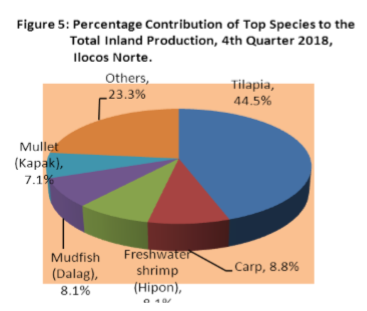
Inland Municipal Fisheries
Production of inland municipal fisheries in Region I decreased by 13.1 percent in 2nd quarter 2017 as compared to its level in the same period of 2016. From its output of 358 metric tons last year, it went down to 311 metric tons this year. All the provinces posted lower growths, except Ilocos Sur. Lesser fishing operations were noted as some fishermen focused in marine fishing and aquaculture operations due to minimal catch in inland waters while others engaged in other jobs like constructions and transports. Lesser appearance and smaller sizes of catch were also observed.
By province, Ilocos Sur ranked first in the volume of production of Inland municipal fisheries during the 2nd quarter 2017 with 35.4 percent share. It was followed by Pangasinan with 29.0 percent share, Ilocos Norte with 18.9 percent, and La Union with 16.7 percent. The top five major catch in the region during the period were Tilapia, Endeavor prawn, Freshwater goby, Freshwater crab, and Mud crab.
Aquaculture
Aquaculture production of Region I increased by 13.1 percent in 2nd quarter 2017. From its output of 33,414 metric tons in the same period last year, it went up to 37,803 metric tons this year. All the provinces of the region, except Ilocos Sur, posted increments in output. The overall positive growth in production could be attributed to increased area harvested during the Lenten season in April, availability of fry and fingerlings, adoption of better culture and feeding management, higher survival rate, and bigger sizes of produce.
The province of Pangasinan shared the bulk of aquaculture production with 85.0 percent. By culture type, aquaculture in Region I was dominated by Brackishwater fishpond which accounted for 38.0 percent of the total production in 2nd quarter 2017.
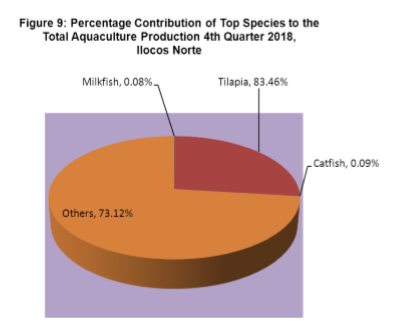
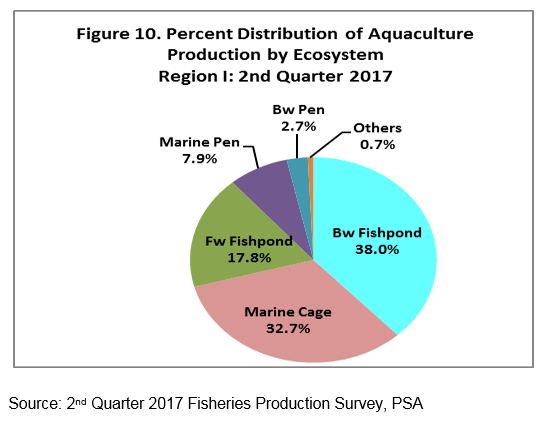
Milkfish dominated the aquaculture production of Region I with a share of 68.9 percent. Its production in 2nd quarter 2017 was posted at 26,062 metric tons, higher than its output in the same quarter in 2016 of 24,727 metric tons. By ecosystem, brackishwater fishpond and pen, freshwater pen, and marine cage recorded positive output. Availability of fry, lesser mortality, improved culture management, and increased harvesting during the Lenten season were the factors that contributed to the higher production.
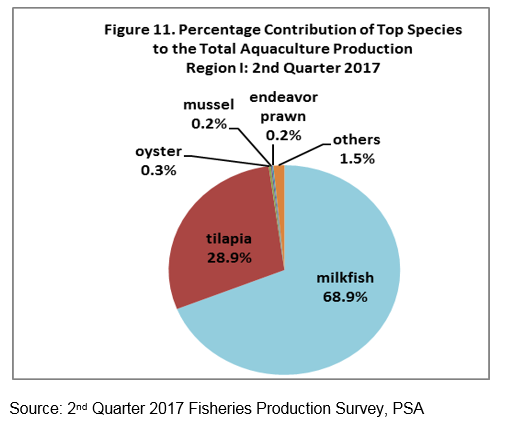
Among the provinces of Region I, Pangasinan has the bulk of milkfish production in 2nd quarter 2017. It shared 81.5 percent to the total production of the region. The rest were shared by the other three provinces.
TECHNICAL NOTES
- The Fisheries Production Survey of the Philippine Statistics Authority (PSA) is divided into four (4) major fisheries surveys. These are the Quarterly Commercial Fisheries Survey (QCFS), Quarterly Municipal Fisheries Survey (QMFS), Quarterly Inland Fisheries Survey (QIFS) and Quarterly Aquaculture Survey (QAqS). The commercial and municipal fisheries surveys aim to provide quarterly data on volume and value of fish production by species, by region and by province. The aquaculture survey is intended to generate quarterly data on volume and value of cultured species by environment, by type of aquafarm, by region and by province.
- Concepts and Definitions:
Aquaculture – fishery operation involving all forms of raising and culturing of fish and other fishery species in marine, brackish and fresh water environment. Examples are fishponds, fish pens, fish cages, mussel, oyster, seaweed farms and hatcheries.
Aquafarm – the farming facilities used in the culture or propagation of aquatic species including fish, mollusk, crustaceans and aquatic plants for purposes of rearing to enhance production.
Brackishwater – mixture of seawater and freshwater with salinity that varies with the tide.Example are estuaries, mangroves and mouths of rivers where seawater enters during high tide.
Commercial Fishing – the catching of fish with the use of fishing boats with a capacity of more than three (3) gross tons for trade, business or profit beyond subsistence or sports fishing.
Fisheries – all activities relating to the act or business of fishing, culturing, preserving, processing, marketing, developing, conserving and managing aquatic resources and the fishery areas including the privilege to fish or take aquatic resources thereof (RA 8550).
Fisheries Sector – the sector engaged in the production, growing, harvesting, processing, marketing, developing, conserving and managing of aquatic resources and fishing areas.
Fish Cage – stationary or floating fish enclosure made of synthetic net wire/bamboo screen or other materials set in the form of inverted mosquito net (“hapa” type) with or without cover with all sides either tied to poles staked to the water bottom or with anchored floats for aquaculture purposes.
Fishing Gear – any instrument or device and its accessories utilized in taking fish and other fishery species.
Fishing Grounds – areas in any body of water where fish and other aquatic resources congregate and become target of capture.
Fish Pen – an artificial enclosure constructed within a body of water for culturing fish and fishery/ aquatic resources made up of bamboo poles closely arranged in an enclosure with wooden materials, screen or nylon netting to prevent escape of fish.
Fishpond – a body of water (artificial or natural) where fish and other aquatic products are cultured, raised or cultivated under controlled conditions. This is a land-based type of aquafarm. Note that the setting-up of fish cages in ponds does not make the operation of fish cage and at the same time a fishpond.
Freshwater – water without salt or marine origin, such as generally found in lakes, rivers, canals, dams, reservoirs, paddy fields and swamps.
Inland Municipal Fishing – the catching of fish, crustaceans, mollusks and all other aquatic animals and plants in inland water like lakes, rivers, dams, marshes, etc. using simple gears and fishing boats some of which are non-motorized with a capacity of three (3) gross tons or less; or fishing not requiring the use of fishing boats.
Landing Center – place where the fish catch and other aquatic products are unloaded and traded.
Municipal Fishing – covers fishing operation carried out with or without the use of a boat weighing three (3) gross tons or less.
SOCRATES L. RAMORES
Regional Director
